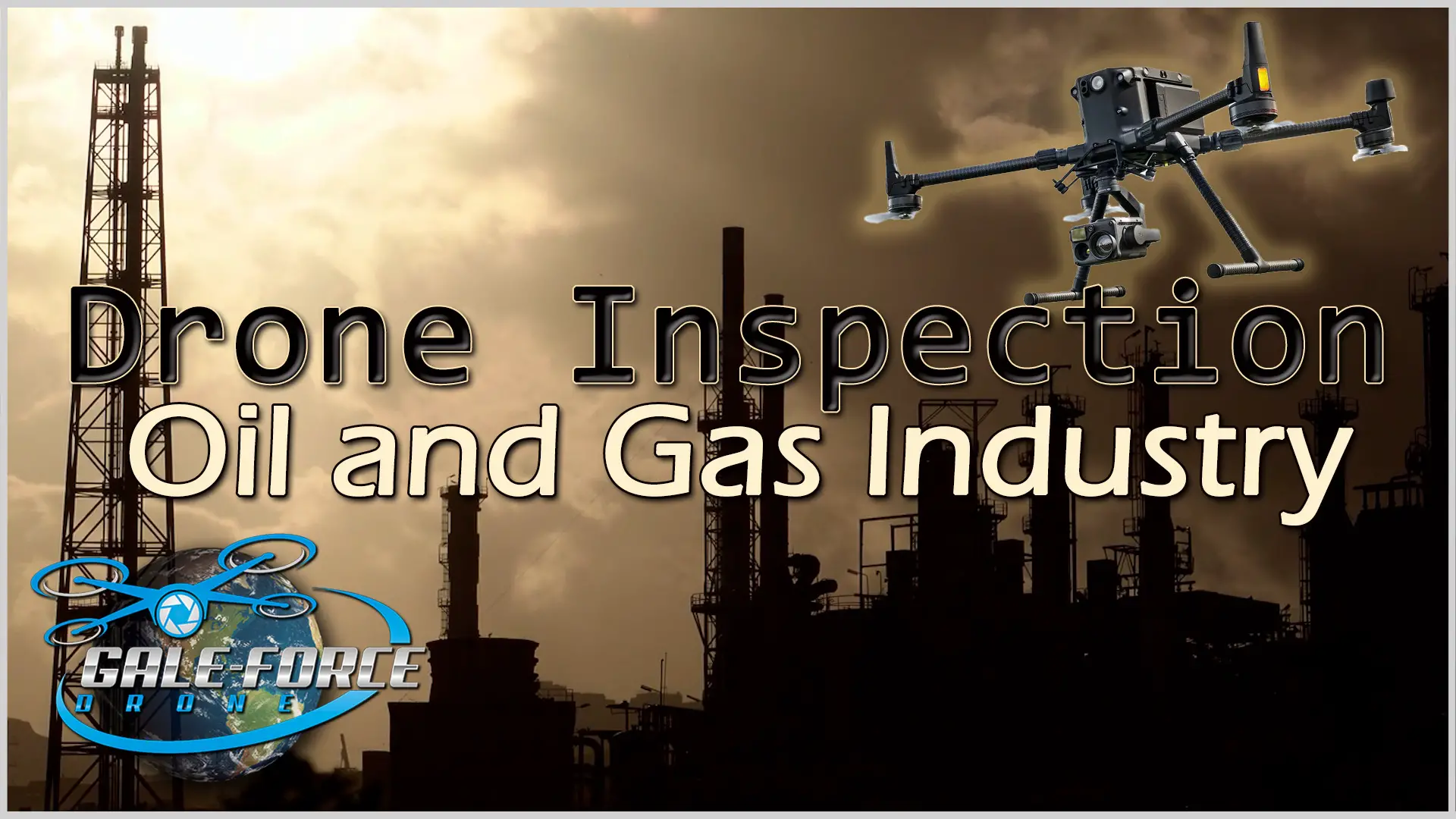
In 2021, the Global Drone Inspection Industry generated nearly 2 billion dollars, and is projected to reach $8.6 Billion by 2031. Widely known for providing inspection data, analysis and reporting to the Powerline, Wind Turbine and Solar Industries, the Drone Industry ALSO serves a diverse sea of users in industries such as, Cell Tower Inspection, Road, Bridge & Rail Inspections as well as Oil and Gas, and Pipeline Inspections.

Getting into the Oil and Gas Industry as a Drone Startup
After working in the drone industry for the last several years, I have seen firsthand the significant growth and potential in the field of drone inspections for the oil and gas sector. As a new drone startup in this field, it’s a good idea to learn about the unique opportunities and the correlating challenges that come with providing drone inspection services to the oil and gas industry.
Do your diligence, do some Market Research
First and foremost, we need to do some market research to understand the current and future demand for drone inspections in the oil and gas industry, locally and regionally. I would also recommend this research to be part of your process in “Choosing Your Drone Specialization“. (click to see my starter guide)
Once you have identified the demand and opportunity, it’s a good idea to establish a value proposition specific to this specialized service offering that sets your business apart from the competition in your market.
Develop a Unique Value Proposition
As a new startup company, or if you are starting a new services offering, I strongly recommend working with someone in the industry that can provide some mentoring and guidance to help you develop your capabilities and establish your unique value proposition. The benefits of learning from those who have already navigated the challenges and opportunities in this field can help us avoid some of the pitfalls, level up our services and set ourselves apart from the competition.
We also need to build a strong team with a combination of expertise in both drone technology and the oil and gas industry. This can be a set of 2 or 3 people starting out, but this will ensure that you start out with the necessary knowledge and skills to provide high-quality inspection services to your clients.
Whatever the differentiators are; continuously updating and improving the technology and services you offer, will help you stay competitive in this rapidly-growing market. Also, your service capabilities, such as offering thermal, or creating 3D or digital twins of the assets, to offering flexibility in your turn-around times, along with competitive pricing, can all be part of your unique value proposition.
Investing in your Marketing and Sales
Again as a new Drone Startup, or if you’re trying to get your Oil and Gas inspection services off the ground, marketing is going to be an important part of getting the word out and building a new customer base.
In my article, “Starter guide to Market Your Drone Services Business” I give you some guidance on how to set up your marketing.
Another effective marketing tactic can be to establish partnerships with key players in the industry, such as oil and gas inspectors or even other drone service providers. These partnerships can provide valuable opportunities for networking and business development.

3 Benefits of Drone Inspection for the Oil and Gas Industry
The Oil and Gas Industry is embracing the advent of drone technology and the benefits that drone inspections provide. The data that is acquired is highly valuable and offers a multitude of benefits that has revolutionized the way the industry operates. From cost savings to increased safety to personnel, drone inspections are changing the game for the better.
Cost Savings
Easily the most noticeable benefit that drone inspections bring to the oil and gas industry is cost savings. Drone inspections lower costs throughout the entire process of bringing oil and natural gas to market. From exploration to production, maintenance and transportation, drone technology increase efficiencies and reduces the need for costly and time intensive manual processes.
Heightened Inspection Capabilities
Another major benefit of drone inspections is the improved capabilities they offer over traditional methods. UAVs have drastically changed the way the world conducts industrial oil and gas inspections, and pipeline inspections are one of the most prevalent areas that are leveraging drones. With advanced cameras and sensors, drones capture 100’s or 1,000’s of miles of pipeline image data that can be analyzed in the comfort of the control center, and with a higher level of detail.
Safety
Safety is always a top priority and concern in the oil and gas industry. Drone inspections play a critical role in increasing safety to personnel. The industry is dangerous with its flammable chemicals, toxic fumes, pressurized gases, and the wide array of industrial equipment making for hazardous conditions. Drones reduce the need for workers to subject themselves to dangerous situations, and ultimately makes inspection processes safer for everyone involved.

In Conclusion
Drone technology is revolutionizing the industrial oil and gas industry by providing cost savings, increased safety to personnel and improved inspection capabilities. As a Drone Services Business, we are the face and the purveyor of this technology, and by providing innovative and valuable inspection services, we offer tremendous benefits to our clients! Don’t miss out on this opportunity, embrace the future and take your business to the next level!


Scopito | Welcome to the future of visual inspections.
At Scopito, we are experts at digitizing your assets. Our platform uses automation and Machine Learning to derive all-important insights from your geospatial data. Over time, your historic inspection data will become the catalyst for powerful predictive maintenance.
